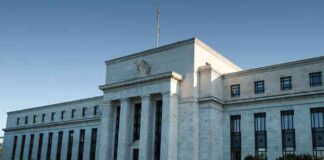Investors are shifting their focus away from peak interest rates as central banks around the world prepare to kick off or continue interest rate cuts this fall. This marks the end of an era of historically high borrowing costs that have been in place since before the Financial Crisis of 2007-2008. The U.S. Federal Reserve is expected to join other central banks such as the European Central Bank, the Bank of England, the People’s Bank of China, the Swiss National Bank, Sweden’s Riksbank, the Bank of Canada, the Bank of Mexico, and others in cutting key rates.
Expectations for Rate Cuts
The markets had already priced in a rate cut from the Fed, but recent comments from Fed Chair Jerome Powell at the Jackson Hole symposium have further solidified investor confidence in the path of easing ahead. Powell emphasized the need for policy adjustment and expressed the central bank’s commitment to keeping the labor market strong and continuing progress on inflation. Current pricing indicates high expectations for three 25 basis point cuts by the Fed before the end of the year, aligning the Fed with its peers who are also expected to make significant rate cuts.
The European Central Bank is projected to cut rates by 25 basis points at least three times this year, while the Bank of England is expected to follow suit. All three central banks are seen continuing monetary easing into early 2025, as they grapple with concerns over stickiness in services inflation. This coordinated effort among central banks points towards a broadly lower-rate environment next year, along with reduced pressures from inflation.
Global Economic Outlook
The shift towards lower interest rates is expected to have a positive impact on the global economy. Despite weakness in manufacturing-oriented economies like Germany, more services-focused economies such as the U.K. are showing signs of solid growth. This trend is reflected in the performance of European and U.S. stock markets, which have rebounded from previous downturns. European stocks, as measured by the Stoxx 600 index, have gained nearly 10% in the year-to-date, reaching an intraday record high. Similarly, the S&P 500 index on Wall Street is 17% higher so far in 2024.
Market Expectations
While recent Fed commentary has been supportive for stocks, investors are closely monitoring data from the U.S. jobs market for signs of economic stability. The next key jobs report is due on September 6, and analysts are optimistic about the prospect of a soft landing for the U.S. economy. Rate cuts and the expectation of further easing have bolstered market sentiment, with equities emerging as the asset class of choice for the remainder of this year and beyond.
Challenges Ahead
Despite the positive outlook, there are challenges ahead for investors. Arnaud Girod, head of economics and cross asset strategy at Kepler Cheuvreux, warns that the pace of rate cuts could impact earnings momentum and weaken investor optimism. While the stock market has shown resilience to interest rate changes, factors such as geopolitical events, corporate earnings, and sector rotation could lead to choppy market conditions in the coming months.
Currency Market Dynamics
In the currency markets, attention remains focused on the interplay between inflation, rate expectations, and economic growth. Jane Foley, head of foreign exchange strategy at Rabobank, highlights the potential impact of a stronger euro against the dollar on market expectations regarding ECB rate cuts. The outcome of the U.S. election is also a key factor to watch, as it could influence the Fed’s monetary policy decisions based on the economic policies of the winning candidate.
Looking Ahead
As investors navigate the shifting landscape of interest rates and central bank policies, the key will be to stay informed and adaptable. Market dynamics are constantly evolving, and staying ahead of the curve requires a deep understanding of economic trends, policy decisions, and global developments. By staying informed and proactive, investors can position themselves to navigate the challenges and opportunities that lie ahead in the ever-changing financial landscape.

















